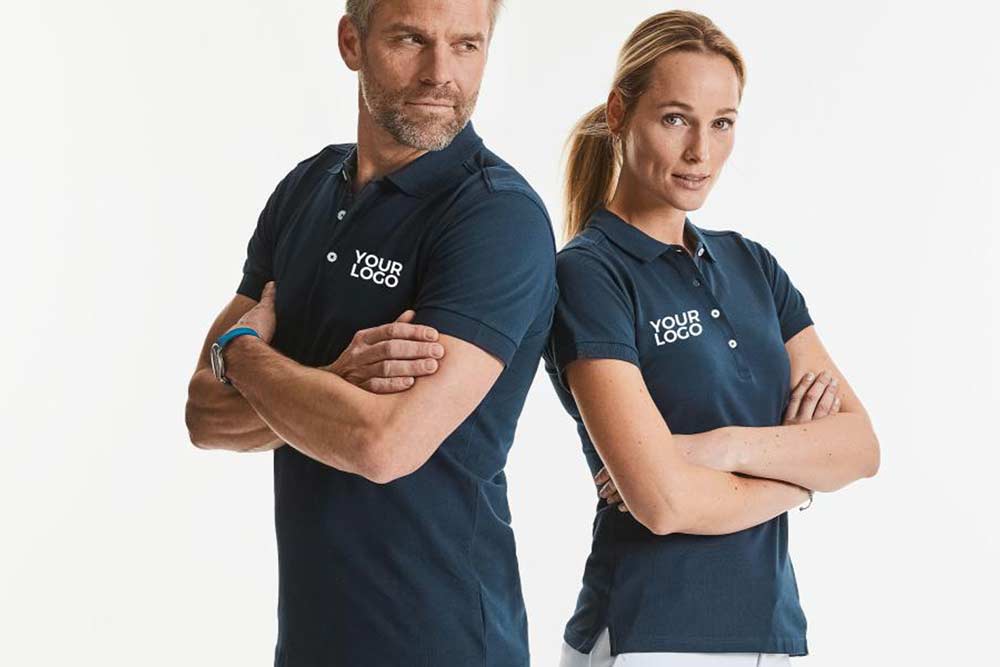Discovering the current Style: Everything About Clothing for the Modern Customer
The modern-day fashion landscape reflects a substantial shift towards sustainability and inclusivity. Brand names are significantly adopting eco-friendly techniques and transparent manufacturing methods. Modern technology is reshaping just how consumers connect with clothes, boosting customization and style. As classic visual appeals and gender-neutral alternatives gain traction, the influence of social media sites accelerates trend cycles. These advancing dynamics question concerning the future of personal expression in vogue. What will this suggest for the consumer?
The Surge of Sustainable Fashion
As customers come to be progressively knowledgeable about the environmental effect of their investing in choices, the surge of sustainable style has gotten substantial momentum in recent times. This motion highlights eco-friendly materials, moral manufacturing procedures, and fair labor methods, appealing to an expanding demographic that values both style and sustainability. Brand names are now prioritizing openness, offering consumers with insights into their supply chains and making practices.Innovative materials, such as organic cotton, Tencel, and recycled materials, are coming to be a lot more widespread, reflecting a shift far from conventional, resource-intensive textiles. In addition, several business are embracing round economy principles, motivating upcycling and reusing to lessen waste.The popularity of thrift purchasing and apparel exchanges further highlights this change, as consumers look for unique items while reducing their ecological footprint - The Branded Wardrobe. Overall, sustainable fashion represents a considerable advancement in the sector, lining up modern consumer values with a dedication to preserving the earth
Tech-Integrated Apparel: the Future Is Currently
The appearance of smart materials is transforming the landscape of fashion, introducing a brand-new era of tech-integrated clothing. Wearable innovation trends are increasingly coming to be mainstream, using consumers improved capability and connection in their clothing. As the line between fashion and technology obscures, the possibilities for advancement seem unlimited.
Smart Fabrics Transformation
An expanding variety of customers are embracing wise materials, which flawlessly integrate innovation right into daily apparel. These innovative textiles improve capability via attributes such as moisture-wicking, temperature policy, and also built-in sensing units. The appeal lies not just comfortably yet also in the capability to monitor health metrics or adapt to ecological problems. Brand names are buying study to develop textiles that can shield versus UV rays, stand up to stains, or also charge devices. As sustainability becomes significantly crucial, many clever materials are also produced from green materials, straightening with consumer need for liable style. This transformation in smart textiles indicates a change towards a future where apparel offers multiple objectives, making garments greater than simply a style declaration.
Wearable Modern Technology Trends
Cutting-edge developments in clever materials naturally result in the rise of wearable innovation fads, where clothing is no more simply clothing but an extension of individual technology. These tech-integrated garments include sensing units and connectivity, making it possible for users to keep an eye on health and wellness metrics, track fitness goals, and obtain alerts seamlessly. Companies are progressively collaborating with tech companies to produce trendy wearables that mix performance with aesthetics. From clever coats that adjust temperature level to fitness trackers installed in sports wear, the options are expanding. As consumer demand for multifunctional items grows, the future of fashion is interwoven with modern technology, using ease and enhancing way of life selections. Ultimately, wearable technology is reshaping how people connect with their garments, making it a vital aspect of modern living.
Classic and Retro Styles Recovering
As nostalgia continues to affect contemporary fashion, vintage and retro designs are progressively catching the focus of modern consumers. This resurgence is identified by a resurgence of famous designs from the 60s, 70s, and 80s, reflecting a longing for less complex times. Brand names are reintroducing classic shapes, lively patterns, and distinctive materials that stimulate memories of past decades.Thrift purchasing and vintage shops have obtained appeal, as consumers seek special pieces that stand apart from mass-produced products. The sustainability motion also plays a significant role, as individuals embrace environment-friendly style selections by selecting pre-loved garments.Social media platforms better enhance this pattern, with influencers showcasing vintage finds and styling them in modern means - The Branded Wardrobe. Eventually, the accept of vintage and retro styles not only meets a wish for individuality but additionally promotes a connection to style history, allowing modern-day consumers to share their identity via a blend of old and new
Gender-Neutral Clothes: Breaking Typical Boundaries

The Effect of Social Media Site on Style Trends
Social media site has ended up being a powerful stimulant for forming fashion patterns, influencing how consumers uncover and engage snappy. Systems like Instagram, TikTok, and Pinterest serve as digital runways, showcasing the most up to date appearances and enabling users to communicate straight with brands and influencers. This instantaneous accessibility to diverse fashion selections has actually equalized style, allowing individuals to curate their closets based on personal preferences instead of typical retail limitations.Moreover, social networks allows fast trend cycles, as viral difficulties or influencer endorsements can move specific items to appeal over night. The surge of user-generated web content allows consumers to share their very own analyses of patterns, promoting a sense of area and partnership. Brands are progressively leveraging social media sites analytics to comprehend consumer habits and preferences, customizing their offerings appropriately. Ultimately, the influence of social networks has changed the fashion landscape, making it a lot more dynamic, inclusive, and responsive to the needs of the contemporary consumer.
Athleisure: Where Convenience Meets Design
Athleisure has actually become a defining trend in modern style, perfectly blending convenience and design. This crossbreed classification of apparel provides to the modern-day consumer's desire for flexible apparel that can change from exercise sessions to informal getaways. Athleisure typically includes high-performance materials, such as elastic blends and moisture-wicking materials, which give both performance and comfort.Popular items include tights, joggers, sporting activities bras, and stylish tennis shoes, all created to be worn beyond the gym. The charm of athleisure lies not just in its usefulness but likewise in its visual, allowing individuals to express their personal design while focusing on comfort. Influencers and stars have additionally pushed this trend, showcasing athleisure as a stylish option for day-to-day wear. Therefore, it has actually come to be a staple in numerous closets, reflecting a social change towards a more kicked back and health-conscious way of living.
Customization and Personalization in Modern Closets

In today's fashion customization, customization and landscape have actually come to be important elements of modern wardrobes. Consumers progressively look for individualized style experiences that mirror their individual styles, sustained by advancements in customized fit technologies. This change not just boosts comfort however additionally equips people to share their unique identities with their apparel choices.
Customized Style Experiences
Just how can today's customers share their individuality via style? Tailored style experiences have arised as a popular pattern, permitting customers to curate closets that mirror their one-of-a-kind identities. Brand names are significantly using personalization choices, such as bespoke designs, monogramming, and the capacity to pick fabrics and colors. This change encourages people to take an energetic duty in creating items that resonate with their personal style.Moreover, modern technology plays a substantial role in boosting these experiences. Virtual dressing rooms and increased fact applications allow consumers to envision exactly how personalized things will certainly look before acquisition. Social network systems likewise assist in sharing these personalized creations, cultivating a community of similar fashion lovers. Eventually, individualized style experiences cater to the modern-day consumer's wish for credibility and self-expression.
Customized Fit Advancements
As consumers progressively look for convenience and style, customized fit innovations linked here have actually ended up being essential in modern closets. These innovations permit individuals to enjoy tailored garments that improves both looks and functionality. Brands are now leveraging technology, such as 3D body scanning and AI-driven style, to provide customized pieces that satisfy one-of-a-kind body forms and dimensions. This shift towards customization not just boosts fit yet also promotes a deeper link between brand names and consumers. In addition, lots of sellers give alternatives for bespoke changes, making it possible for clients to change designs to reflect individual taste. Ultimately, customized fit innovations are redefining shopping experiences, permitting for self-expression while focusing on comfort, making them a considerable aspect of contemporary fashion.
Regularly Asked Concerns
What Materials Are Typically Made Use Of in Lasting Fashion Today?
The question refers to products in lasting style. Generally used products include organic cotton, Tencel, hemp, and recycled polyester, each selected for their lower ecological influence and ability to promote environment-friendly production methods in the fashion market.
Just How Can I Take Care Of Tech-Integrated Apparel?
Caring for tech-integrated apparel needs mild washing, avoiding extreme chemicals, and following specific treatment directions. Normal upkeep, such as guaranteeing and inspecting connections sanitation of sensors, helps prolong the lifespan and performance of the garments.
Where Can I Find Genuine Vintage Apparel?
Finding authentic vintage clothing can be attained via numerous methods. Second hand stores, classic boutiques, online marketplaces, and estate sales frequently offer special pieces. Involving with vintage style areas can likewise supply valuable leads and recommendations.
Exist Particular Brand Names Specializing in Gender-Neutral Garments?
The inquiry of certain brand names specializing in gender-neutral clothes has actually obtained focus. Remarkable brands include Telfar, Wildfang, and Unisex, which concentrate on comprehensive layouts, dealing with diverse identities and advertising a much directory more fluid approach to style.
How Does Social Media Influence Consumer Buying Decisions?
Social media considerably shapes consumer buying choices by allowing brand exposure, promoting peer impact, and assisting in instantaneous access to fads. Individuals frequently depend on influencers and on-line evaluations, influencing their choices and choices. As fond memories proceeds to affect modern style, vintage and retro designs are significantly recording the interest of modern-day consumers. While standard gender norms have long dictated the fashion landscape, the increase of gender-neutral apparel is reshaping how customers approach their wardrobes. Social media has ended up being a powerful driver for shaping style trends, influencing exactly how consumers involve and uncover with design. Customers progressively look for individualized style experiences that reflect their specific styles, sustained by innovations in customized fit technologies. Individualized style experiences have arised as a popular pattern, enabling consumers to curate closets that show their special identities.